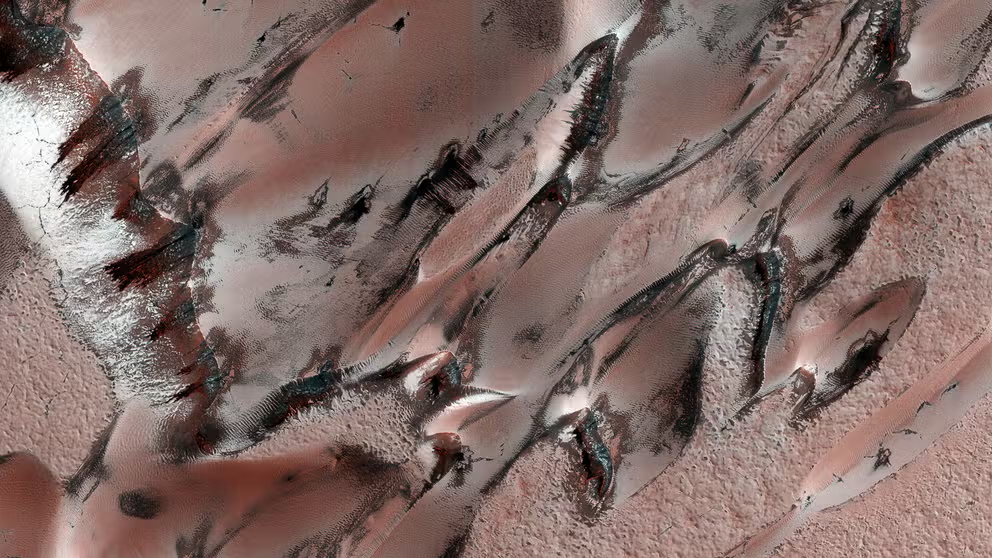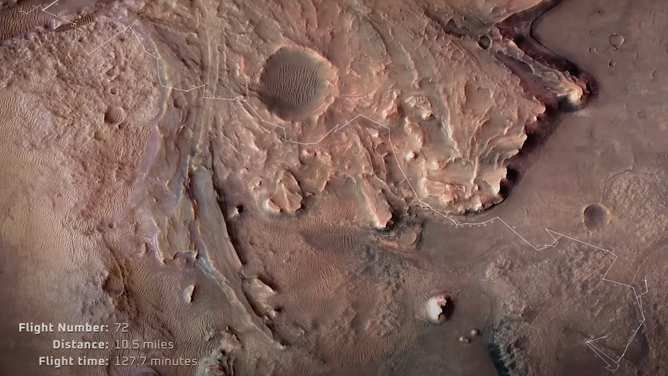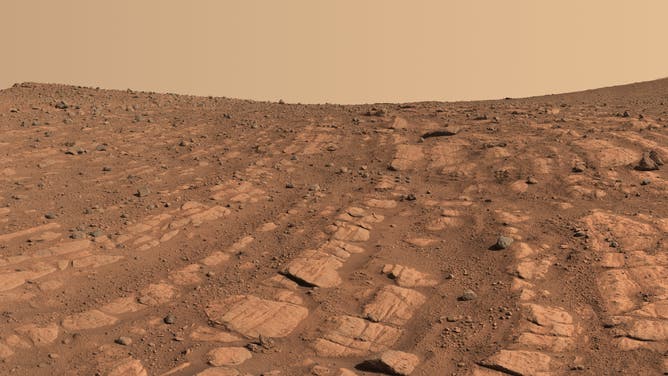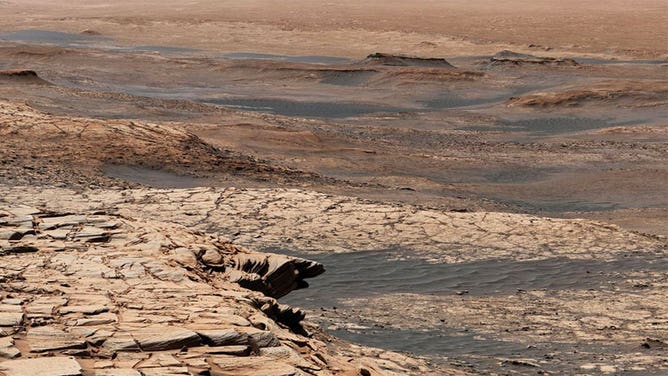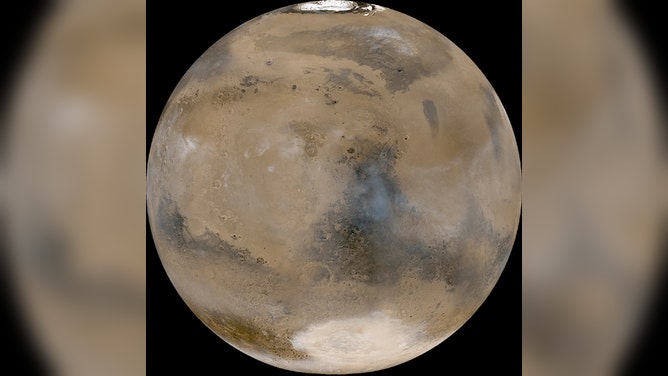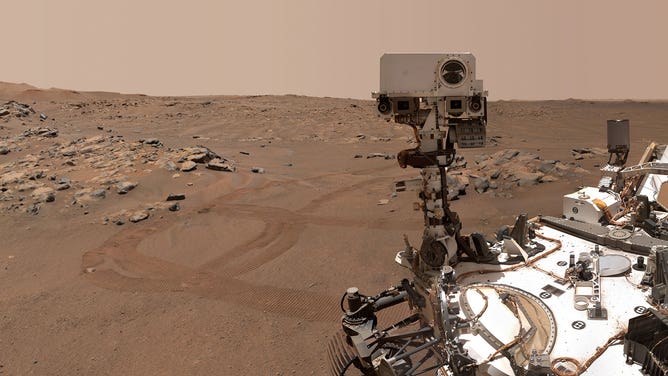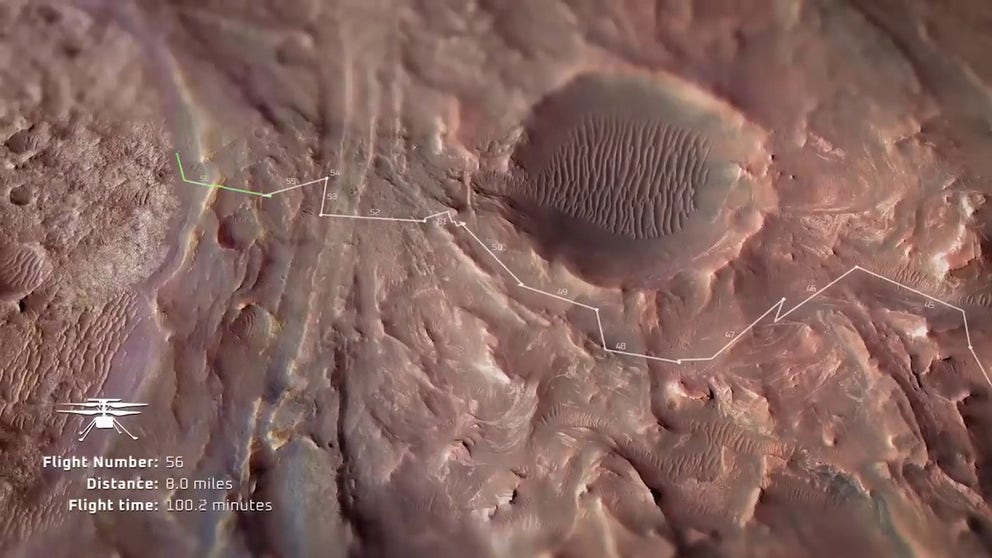Could dust be used to cool the Red Planet to sustain life?
Mars is thought to have formed some 4.6 billion years ago and is the most explored planet in the solar system. According to NASA, Mars’ atmosphere is made up of 95% carbon dioxide, 2.7% nitrogen, 1.6% argon and 0.13% oxygen. Due to the composition, the atmosphere is not thick enough to trap heat, so temperatures are thought to range from more than -200 degrees Fahrenheit below zero to only about 80 degrees in direct sunlight.
'Wintry' scenes from Mars: How the Red Planet sometimes looks a little white
It's not just Earth that boasts snowfall. Mars gets snow sometimes too, only there, it's frozen carbon dioxide, not water. Peek at some of the "snowy" scenes from our distant planetary neighbor.
CHICAGO – Some university researchers believe they have developed a technique that could potentially warm the Red Planet, making it more hospitable to life.
A study recently published in the journal Science Advances suggests that the mass release of dust into Mars’ thin atmosphere could raise the planet’s temperature by more than 50 degrees Fahrenheit, creating a more habitable environment.
While the technique would likely take decades to show meaningful results, it is said to be simpler than any previous proposals.
"This suggests that the barrier to warming Mars to allow liquid water is not as high as previously thought," Edwin Kite, an associate professor of geophysical sciences at the University of Chicago and author of the study, said in a statement.
‘INTRIGUING’ ROCK DISCOVERY ON MARS SHOWS POSSIBLE INDICATORS OF ANCIENT LIFE
Mars is thought to have formed about 4.6 billion years ago and is the most explored planet in the solar system.
According to NASA, its atmosphere is composed of 95% carbon dioxide, 2.7% nitrogen, 1.6% argon, and 0.13% oxygen.
Due to the composition, the atmosphere is not thick enough to trap heat, leading to temperatures that range from more than -200 degrees Fahrenheit to about 80 degrees in direct sunlight.
The proposed dust particles, described as similar to glitter, would help trap the Sun’s heat and light, creating a greenhouse effect.
However, researchers caution that even with this technique, the environment would still be hostile to humans. Nevertheless, it could lay the groundwork for growing vegetation and future exploration.
Experts have noted that the strategy for Mars is the opposite of what needs to be done on Earth - trapping solar heat close to the surface.
SEE THE OBJECTS HUMANS LEFT BEHIND ON THE MOON
"You'd still need millions of tons to warm the planet, but that’s five thousand times less than you would need with previous proposals to globally warm Mars," Kite stated. "This significantly increases the feasibility of the project."
NASA has previously announced plans to send astronauts to Mars as early as the 2030s, but that self-imposed deadline may be slipping due to recent technical and budgetary issues.
Recently, a four-person crew completed a year-long project simulating spacewalks, experiments, and other activities intended for the Martian surface.
The planet is, on average, about 140 million miles away from Earth, meaning a round-trip mission and stay would last several years.
Watch Ingenuity helicopter's 72 flights on Mars
Designed to be a technology demonstration that would take five flights in 30 days, NASA's Ingenuity helicopter eventually flew more than 14 times farther and logged more than two hours of total flight time. This video shows all 72 flights on Mars, including the final flight on Jan. 18, 2024. (Video: NASA/JPL-Caltech)
